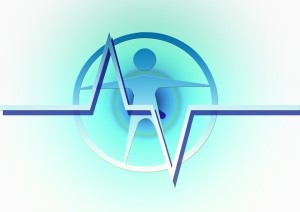The word “homeostasis” describes the body’s ability to maintain relatively stable internal conditions even though the outside world is constantly changing. Homeostasis indicates a dynamic state of equilibrium or a balance in which internal conditions change and vary but always within relatively narrow limits. Communication within the body is essential for homeostasis and is accomplished chiefly by the nervous and endocrine systems.
Homeostasis: (ho`me-o-sta’sis) a tendency to stability in the normal body state (internal environment) of the organism. It is achieved by a system of control mechanisms activated by negative feedback. 1
Many of the most vital functions of the human body are influenced by the endocrine system, which consists of glands that secrete hormones, or chemical messengers into the bloodstream. The hypothalamus, located in the brain, acts like a radar, receiving incoming information from the nervous system. It then uses this information to manufacture hormones that either target specific part of the body, or to target other glands to produce specific hormones for homeostatic regulation.
The endocrine system consists of the hypothalamus, pituitary gland, pineal gland, the thyroid gland, the parathyroid gland, the pancreas, the adrenal glands, the ovaries and the testes. All of the organs of the endocrine system are glands, but not all glands are part of the endocrine system. Other organs that produce hormones, but are not part of the endocrine system include the placenta in the pregnant female, glands in the gastro-intestinal tract, structures in the heart and blood vessels, and structures in the kidneys.
Hormones are the body’s internal chemical messengers. They carry the information that controls the function of almost all of the body’s cells and tissues. Most hormones are themselves are controlled by a mechanism called feedback, which is similar to a thermostat in a central heating system. When a gland is working harder than the body needs it to, the hormone system switches off; when the body needs the gland to speed up, the nervous system turns on the switch again.
Hormones reach every part of the body, and the membrane of every cell has receptors for one or more hormones that stimulate or retard a specific body function. The hypothalamus, located at the base of the brain, acts as the mastermind that coordinates hormone production, producing regulatory or releasing hormones; these travel a short distance through special blood vessels and nerve endings to the pituitary gland, which is often referred to as the “master gland”. Attached to the hypothalamus by a short stalk, the pea-sized pituitary gland hangs from the base of the brain and is composed of two parts, an anterior and a posterior lobe. Some of its hormones act indirectly by stimulating target glands to release other hormones. Others have a direct effect on the function of target glands or tissues.
Hormones can work in astonishingly small concentrations. On the high end, the ratio of hormone molecules to blood molecules is 1 to 5 billion, and on the low end side the ratio is 1 to 5 zillion, ( 1 in 5,000,000,000,000,000) This would be the equivalent of putting one drop of liquid in a swimming pool that was filled with the water of 660 railroad boxcars. A train with 660 boxcars would be six miles in length.
Article originally posted at ICPA.org.

